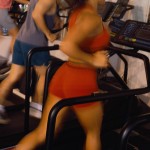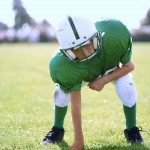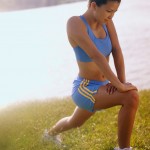 Question: I’m 65 years young. How do you recommend I start lifting weights? I’m brand new to working out and plan to purchase dumbbells to workout at home. -Carol, Nashville TN
Question: I’m 65 years young. How do you recommend I start lifting weights? I’m brand new to working out and plan to purchase dumbbells to workout at home. -Carol, Nashville TN
Answer: Begin with two initial steps to determine the best course of action for your individual goals. Firstly, consider enlisting assistance from a Professional Fitness Trainer in the beginning, as s/he can help you create good habits with proper form and technique, while avoiding injury. Secondly, look into local gyms or community centers, as they may offer group exercise classes that involve weights. Both of these initial steps will help you learn the how-to’s of strength training to then safely and effectively transfer these principles to a home workout.
Here are a few additional points to keep in mind when starting out on an at-home strength training routine:
Purchase 2-3 sets of dumbbells at different weights. A good starting selection is 3, 5, and 8 lb weights. Remember that water bottles and soup cans are also good light weights to start.
Invest in a strength training DVD. Or research if your cable company provides on demand fitness shows for guidance as to the best exercise selection.
Be mindful of proper footwear. Be sure to wear athletic shoes when lifting weights to help your body maintain stability and to protect your feet in case one of the dumbbells is dropped.
Hydrate. Have water on hand. Hydrate before, during, and after your strength workout.
Always warm up prior to your strength training workout. An appropriate warm up consists of walking, jogging, or going up and down the stairs. Once you break into a light sweat, you are sufficiently warm.
Keep it simple. Remember to keep the exercises simple at first and take a day off (a rest day) after completing a weights session. Your muscles will need a day to recover. One this day off (or even the day after) you might experience delayed onset muscle soreness (DOMS.) This is normal and means your muscles are healing. It is perfectly fine to perform cardio on your rest days.
London-based personal trainer Mollie Millington may be reached at www.ptmollie.com, as well as via @PTMollie on Twitter.
 Subscribe
Subscribe



 Question: How do I prevent my teen from getting discouraged when not making the sports team at school? How do I help him build self-confidence? –Marc in Minneapolis, MN.
Question: How do I prevent my teen from getting discouraged when not making the sports team at school? How do I help him build self-confidence? –Marc in Minneapolis, MN.


